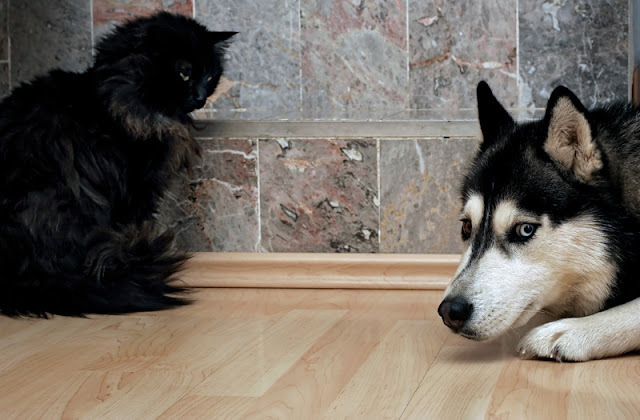Going for a Song? The Price of Pet Birds
The price of birds for sale in pet
stores in Taiwan sheds light on legal (and illegal) trade, with consequences for native wildlife.
There were over 26,000 birds for sale, of 217 species. The most expensive birds were Golden Parakeet (Guaruba guarouba), retailing at US$8,000, and Major Mitchell's Cockatoo Cacatua leadbeateri) at $7,500. All of the most expensive birds were alien species. The cheapest bird was the Eurasian Tree Sparrow (Passer montanus) at only 86 cents each.
You might also like:
The Street Dogs of Bangkok
Will Grey Parrots Share?
Can Cats and Coyotes Co-Exist?
A new study by Su Shan (Institute of Zoology) et al investigates the birds for sale in pet
shops in Taiwan, and the factors that affect their price.
Taiwan is an interesting place to study birds. Songbirds are kept for singing competitions, and there is a tradition of taking caged birds out for a walk (‘bird walking’). As in other Asian countries, birds and other animals are set free in order to make merit (prayer release), potentially adding significantly to the numbers of alien birds living wild. There is a lot of trade with other Asian countries, and some birds have been obtained illegally.
The price of the birds is a measure of the market, because easily-obtained birds are assumed to be cheaper. The bird trade is very lucrative in Asia and checking the price is one way to find out which birds are being bought and sold.
The authors say,
The price of the birds is a measure of the market, because easily-obtained birds are assumed to be cheaper. The bird trade is very lucrative in Asia and checking the price is one way to find out which birds are being bought and sold.
The authors say,
“species that are for sale in large numbers, are native to Taiwan, and with healthy wild populations available for international trade (as assessed by CITES) all fetch a relatively low price in Taiwan.”
This is good news because Su et al say the
birds released for prayer are likely the cheaper birds, therefore releasing
native rather than alien species. However the higher price of alien species
does not guarantee they will not be released into the wild. The paper says more than 200 million prayer release animals are set free in Taiwan each year.
The researchers visited 72 pet shops,
including 32 in Taipei City, and recorded which species were for sale, how many
there were, and at what price. Sometimes many birds were kept in a cage, with cages
stacked high. Nonetheless they were able to identify almost all the bird
species, except for three very similar white-eyed birds where the shopkeeper’s
identification could not be relied upon due to questionable legality.
 |
| Photo: red-feniks/Shutterstock |
There were over 26,000 birds for sale, of 217 species. The most expensive birds were Golden Parakeet (Guaruba guarouba), retailing at US$8,000, and Major Mitchell's Cockatoo Cacatua leadbeateri) at $7,500. All of the most expensive birds were alien species. The cheapest bird was the Eurasian Tree Sparrow (Passer montanus) at only 86 cents each.
To the surprise of the researchers, the
complexity of the bird’s song did not increase the price, perhaps because
parrots are very expensive, especially if trained to mimic speech. Larger birds
also cost more to acquire and care for, and the authors point out that parrots
may be a “once in a lifetime purchase”.
A bird’s plumage also affects the price,
with grey birds being cheaper, and yellow the most expensive.
The authors say,
Therefore a yellow bird can fetch a higher price.
The authors say,
“Cultural factors may be key in driving such colour preferences. For example, the colour grey has associations with low value in Asian countries (e.g. China and Japan)… In traditional Chinese culture, nature is composed of five elements – wood, fire, earth, metal and water – and each element has a colour and compass point associated with it. Yellow exemplifies the earth and represents the centre of the compass, and is therefore of high importance.”
Therefore a yellow bird can fetch a higher price.
Since the majority of birds for sale were
alien species (68%), this is a threat to Taiwan’s native wildlife. The authors
consider several ways to reduce the threat, including discouraging prayer
release. Alternatively, they suggest altering practices so that it includes
conservation as an aim.
Reference
Su, S., Cassey, P., Vall-llosera, M., & Blackburn, T. (2015). Going Cheap: Determinants of Bird Price in the Taiwanese Pet Market PLOS ONE, 10 (5)
Su, S., Cassey, P., Vall-llosera, M., & Blackburn, T. (2015). Going Cheap: Determinants of Bird Price in the Taiwanese Pet Market PLOS ONE, 10 (5)
You might also like:
The Street Dogs of Bangkok
Will Grey Parrots Share?
Can Cats and Coyotes Co-Exist?





